This studio was an exploration to understand the impacts of mass tourism on a territorial scale in Formentera. The destruction of the mediterranean sea grass by boats was the main driver for the development of this project. The goal was to protect posidonia and increase sustainable tourism by balancing the expansion and protection of existing nature, creating a new tourism experience and exploiting and stimulating the blue economy.
Video analysis
- Formentera’s essence
- How a visitor might experience the island
- The effects of mass tourism
- The importance of the posidonia ecosystem
Current situation: A projected paradise, the presence of mass tourism has created problems beneath the surface, such as the destruction of posidonia as well as the accumulation of garbage and plastic in the already most polluted sea.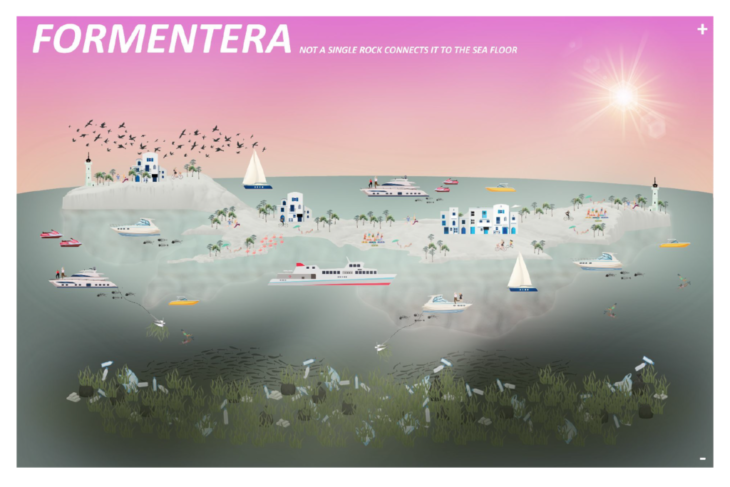 If tourism is the driver, where could things go from here? From Human to Nature centered.
If tourism is the driver, where could things go from here? From Human to Nature centered.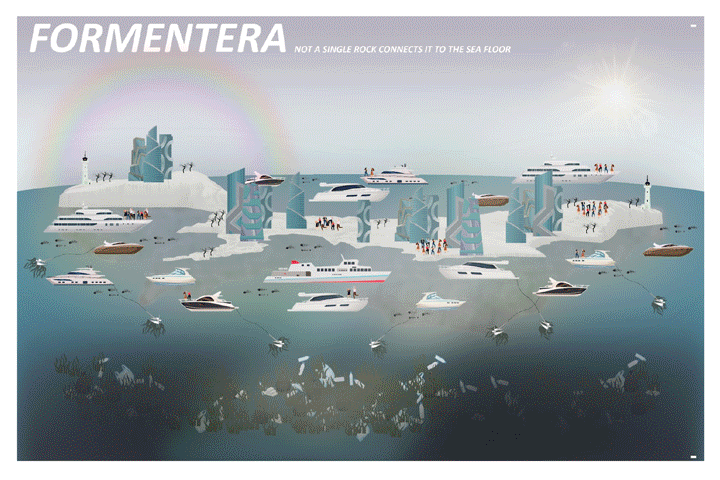 How could the ecosystem be protected and the economy stimulated simultaneously?
How could the ecosystem be protected and the economy stimulated simultaneously?
- Human centered: With lack of regulations on anchoring, quantity of boats and the built environment, the consequences of these actions could destroy the natural beauty of the island.
- Nature centered: Increase in regulations, less boats, no anchoring and only allowing temporary accommodations to allow this ecosystem to thrive. In this scenario, not only is mass tourism abolished but so is the overall concept of tourism.
- Human + Nature centered: Removing the influx of tourism from the island itself and utilizing tourism as a protective barrier for the posidonia and greater ecosystem. This could create new opportunities for sustainable tourism for an island in which 75% of the economy is dependent on tourism.
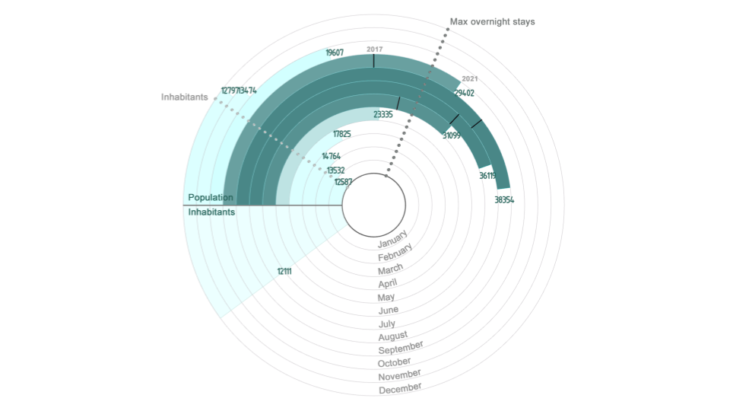 People Flows: The population ranges between the 12.000 and a summer population of 38.000. In summer, roughly 3 out of 4 people are tourists and only some stay on the island overnight. A third of the overall visitors experience Formentera by day trips on the island, or on the shores from their boats.
People Flows: The population ranges between the 12.000 and a summer population of 38.000. In summer, roughly 3 out of 4 people are tourists and only some stay on the island overnight. A third of the overall visitors experience Formentera by day trips on the island, or on the shores from their boats.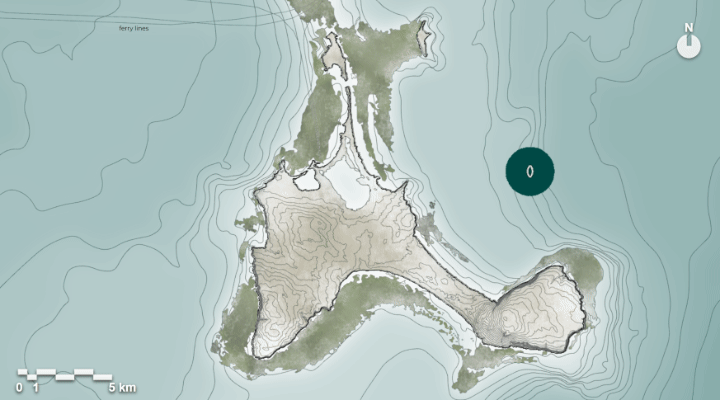 In summer, boats cluster around the coastline, collecting in the most protected area on the northern tip and on the west.
In summer, boats cluster around the coastline, collecting in the most protected area on the northern tip and on the west.
Proposal: A dynamic solution that expands as the posidonia meadows grow.
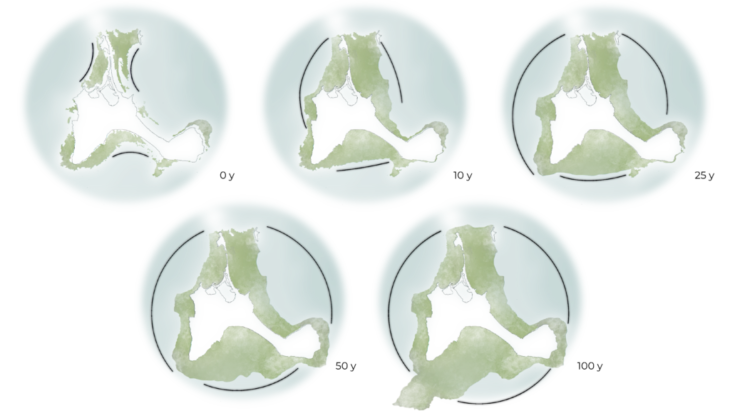
Posidonia can grow in conditions up to 40-50 meters deep. The depth of the seabed was analyzed to create a constraint to protect this potential growing region over the next 100 years. 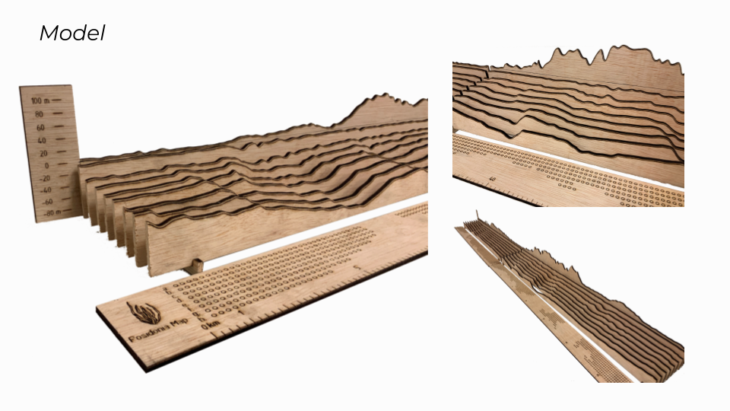
The intervention is a system of rings that separate the protected area from mass tourism, assembled on piles of regenerative concrete that are attached to the seafloor and stimulate the ecosystem.
As posidonia grows, so does the intervention which in hand expands the tourism industry and the blue economy.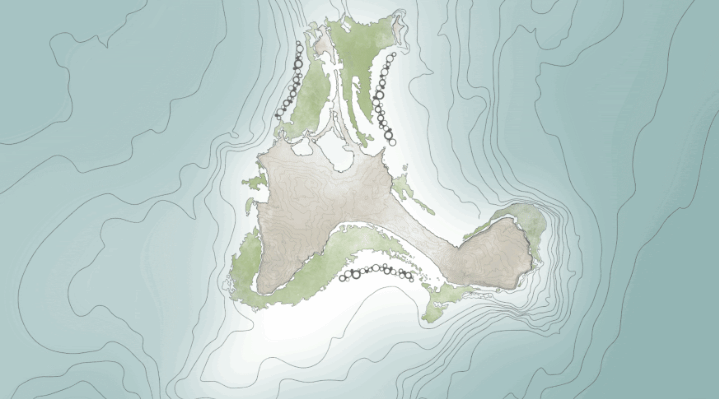
- 0y: The arches face inward and are located close to the existing posidonia meadows in order to regenerate, protect and encourage growth.
- 10y: Additional interventions are joined to create a larger arch which covers and protects more of the posidonia while increasing the amount of tourism and industry.
- 25y: The west side has expanded to its fullest potential as has the posidonia meadow in that location.
- 50y: The east side has expanded to its fullest potential as has the posidonia meadow in that location.
- 100y: Protecting the majority of the potential posidonia meadow and regulating the mass tourism effect on Formentera.
This intervention would consequently re-route boat flows around Formentera.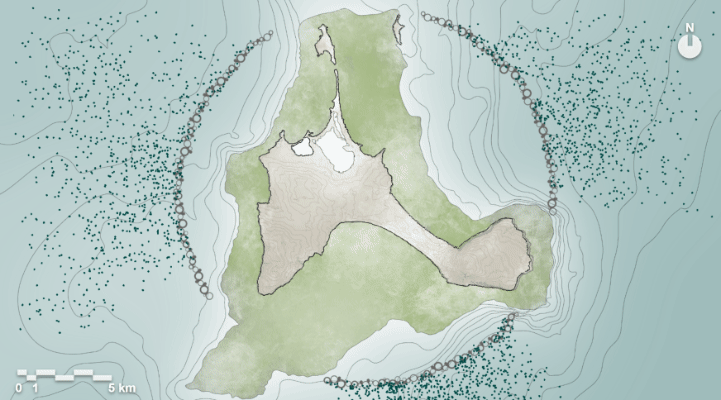 The coastal ring is comprised of 9 different typologies distributed throughout.
The coastal ring is comprised of 9 different typologies distributed throughout.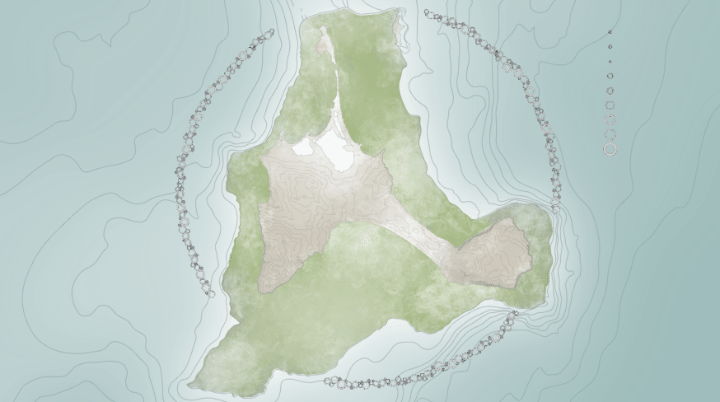
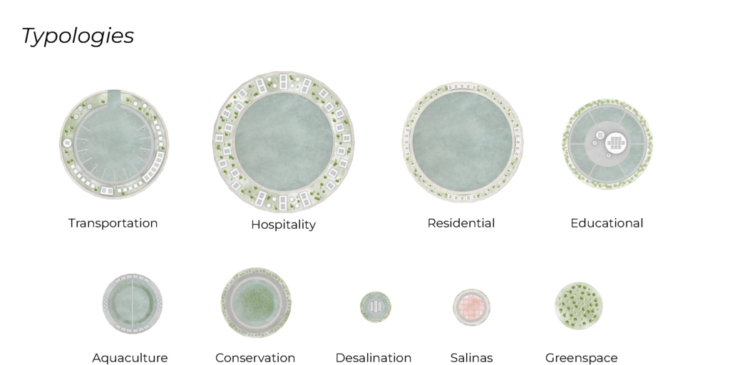
These typologies were designed around the current and future needs of the island, focusing on: transportation nodes, accommodation for tourists and residents, ecosystem regeneration and economic industries.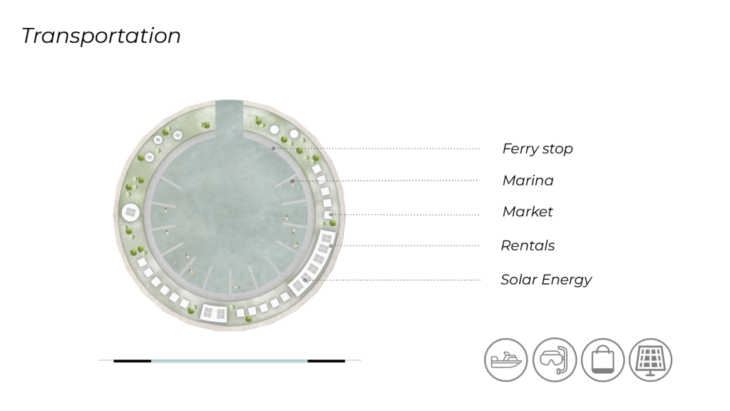
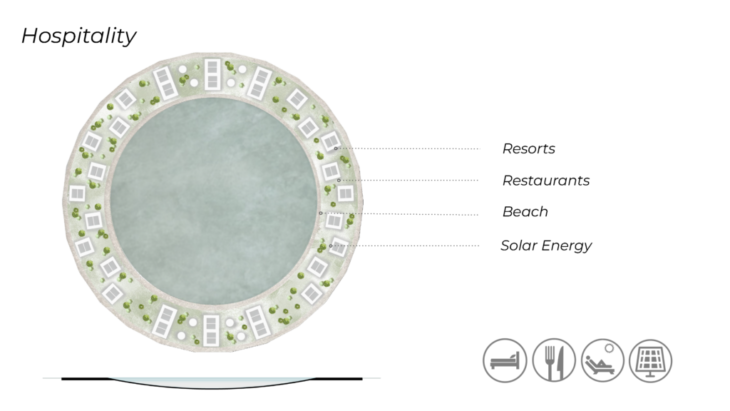
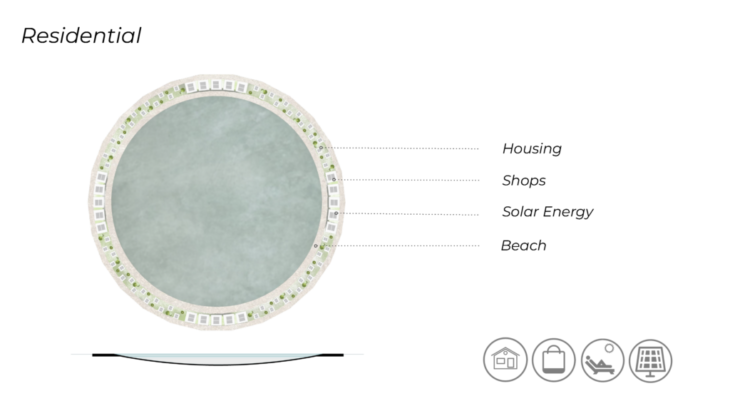
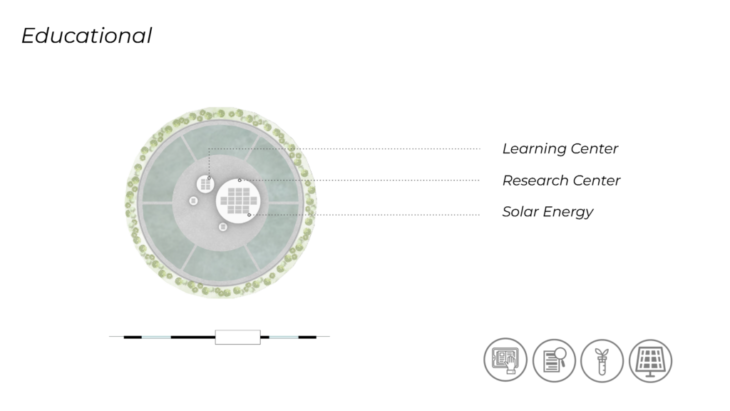
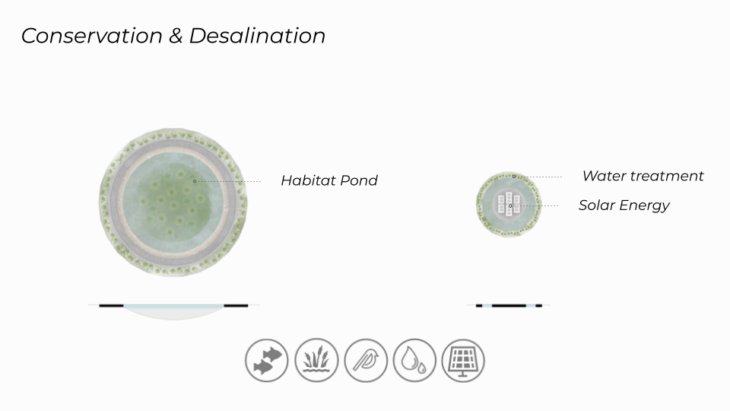
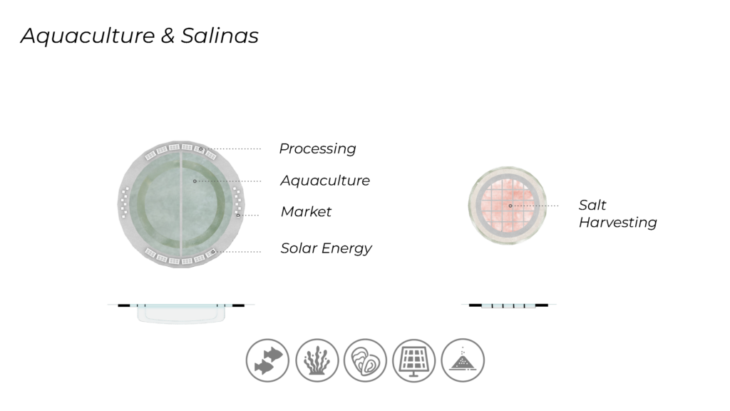 The nodes link together and are aggregated with greenspaces throughout, so that visitors and locals are able to experience nature all along the costa del mar.
The nodes link together and are aggregated with greenspaces throughout, so that visitors and locals are able to experience nature all along the costa del mar. 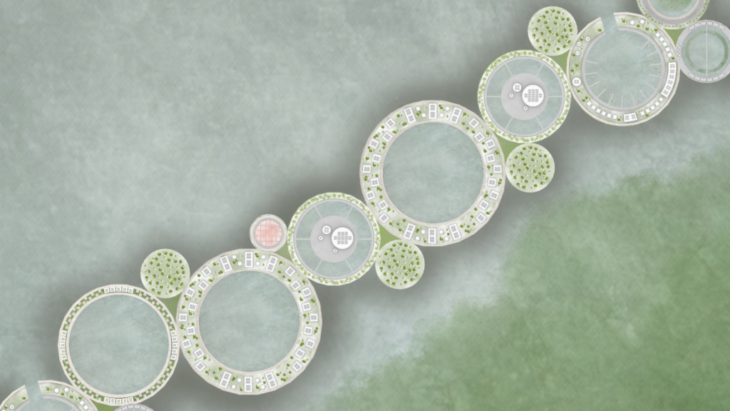
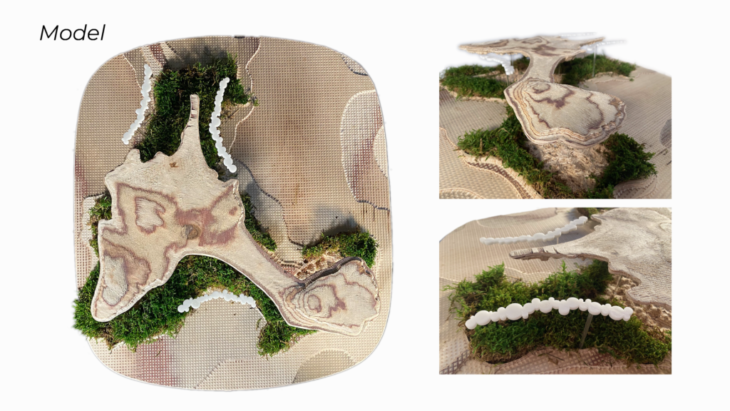 COSTA DEL MAR is a project of IAAC, Institute for Advanced Architecture of Catalonia developed in the Master in Advanced Architecture 2020/21 by Students: Morgan O’Reilly, Federico Caldi, Alessandra Weiss; Faculty: Mathilde Marengo, Willy Müller, and Student Assistants: Adriana Aguirre Such, Margherita Pasquali
COSTA DEL MAR is a project of IAAC, Institute for Advanced Architecture of Catalonia developed in the Master in Advanced Architecture 2020/21 by Students: Morgan O’Reilly, Federico Caldi, Alessandra Weiss; Faculty: Mathilde Marengo, Willy Müller, and Student Assistants: Adriana Aguirre Such, Margherita Pasquali